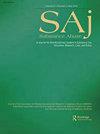从单个城市学术机构使用患者阿片类药物消费模式评估美国州阿片类药物处方限制
IF 2.4
3区 医学
Q2 SUBSTANCE ABUSE
引用次数: 0
摘要
背景:自2017年以来,各州、保险公司和药店对阿片类药物处方的持续时间和数量进行了全面限制。在许多州,重叠的持续时间和每日剂量限制导致最高处方限制为150-350吗啡毫克当量(MMEs)。对于这些限制与实际患者阿片类药物消费量的比较,我们了解有限;虽然已经研究了处方模式和阿片类药物滥用率的变化,但这些充其量只是实际疼痛控制消费的弱代表。我们试图通过使用实际患者阿片类药物消费数据来确定接受手术的患者如何受到阿片类药物处方限制的影响。方法:我们构建了一个出院后阿片类药物消费的前瞻性数据库:在一家机构接受手术的患者出院后被称为收集阿片类药物消费数据。确定阿片类药物消耗量超过150和350 MME的患者。结果:我们的研究纳入了接受54种常见外科手术的2,971例患者。21%的患者摄入了超过150mme的限制。只有7%的患者摄入超过350mme的限制。典型(非异常值)阿片类药物消费量,定义为任何给定程序的消费量低于第75百分位数,分别超过41%和7%的程序的150 MME和350 MME限制。骨科、脊柱/神经外科和复杂的腹部手术最常超过这些限制。结论:虽然大多数接受手术的患者不受最近的一揽子处方限制的影响,但接受特定手术子集的患者可能需要比限制允许更多的阿片类药物;提供者应该意识到这些患者可能需要重新补充以充分控制术后疼痛。应该使用真实的消费数据来指导这些限制,并为未来的干预提供信息,以便将疼痛控制恶化的风险(及其对阿片类药物滥用的麻烦影响)降至最低。特定程序的处方限制可能是防止滥用的一种方法,同时也优化了术后疼痛控制。本文章由计算机程序翻译,如有差异,请以英文原文为准。
Evaluation of U.S. State Opioid Prescribing Restrictions Using Patient Opioid Consumption Patterns from A Single, Urban, Academic Institution
Background:Since 2017, states, insurers, and pharmacies have placed blanket limits on the duration and quantity of opioid prescriptions. In many states, overlapping duration and daily dose limits yield maximum prescription limits of 150–350 morphine milligram equivalents (MMEs). There is limited knowledge of how these restrictions compare with actual patient opioid consumption; while changes in prescription patterns and opioid misuse rates have been studied, these are, at best, weak proxies for actual pain control consumption. We sought to determine how patients undergoing surgery would be affected by opioid prescribing restrictions using actual patient opioid consumption data. Methods: We constructed a prospective database of post-discharge opioid consumption: patients undergoing surgery at one institution were called after discharge to collect opioid consumption data. Patients whose opioid consumption exceeded 150 and 350 MME were identified. Results: Two thousand nine hundred and seventy-one patients undergoing 54 common surgical procedures were included in our study. Twenty-one percent of patients consumed more than the 150 MME limit. Only 7% of patients consumed above the 350 MME limit. Typical (non-outlier) opioid consumption, defined as less than the 75th percentile of consumption for any given procedure, exceeded the 150 MME and 350 MME limits for 41 and 7% of procedures, respectively. Orthopedic, spinal/neurosurgical, and complex abdominal procedures most commonly exceeded these limits. Conclusions: While most patients undergoing surgery are unaffected by recent blanket prescribing limits, those undergoing a specific subset of procedures are likely to require more opioids than the restrictions permit; providers should be aware that these patients may require a refill to adequately control post-surgical pain. Real consumption data should be used to guide these restrictions and inform future interventions so the risk of worsened pain control (and its troublesome effects on opioid misuse) is minimized. Procedure-specific prescribing limits may be one approach to prevent misuse, while also optimizing post-operative pain control.
求助全文
通过发布文献求助,成功后即可免费获取论文全文。
去求助
来源期刊

Substance abuse
SUBSTANCE ABUSE-
CiteScore
5.90
自引率
2.90%
发文量
88
审稿时长
>12 weeks
期刊介绍:
Now in its 4th decade of publication, Substance Abuse journal is a peer-reviewed journal that serves as the official publication of Association for Medical Education and Research in Substance Abuse (AMERSA) in association with The International Society of Addiction Medicine (ISAM) and the International Coalition for Addiction Studies in Education (INCASE). Substance Abuse journal offers wide-ranging coverage for healthcare professionals, addiction specialists and others engaged in research, education, clinical care, and service delivery and evaluation. It features articles on a variety of topics, including:
Interdisciplinary addiction research, education, and treatment
Clinical trial, epidemiology, health services, and translation addiction research
Implementation science related to addiction
Innovations and subsequent outcomes in addiction education
Addiction policy and opinion
International addiction topics
Clinical care regarding addictions.
 求助内容:
求助内容: 应助结果提醒方式:
应助结果提醒方式:


